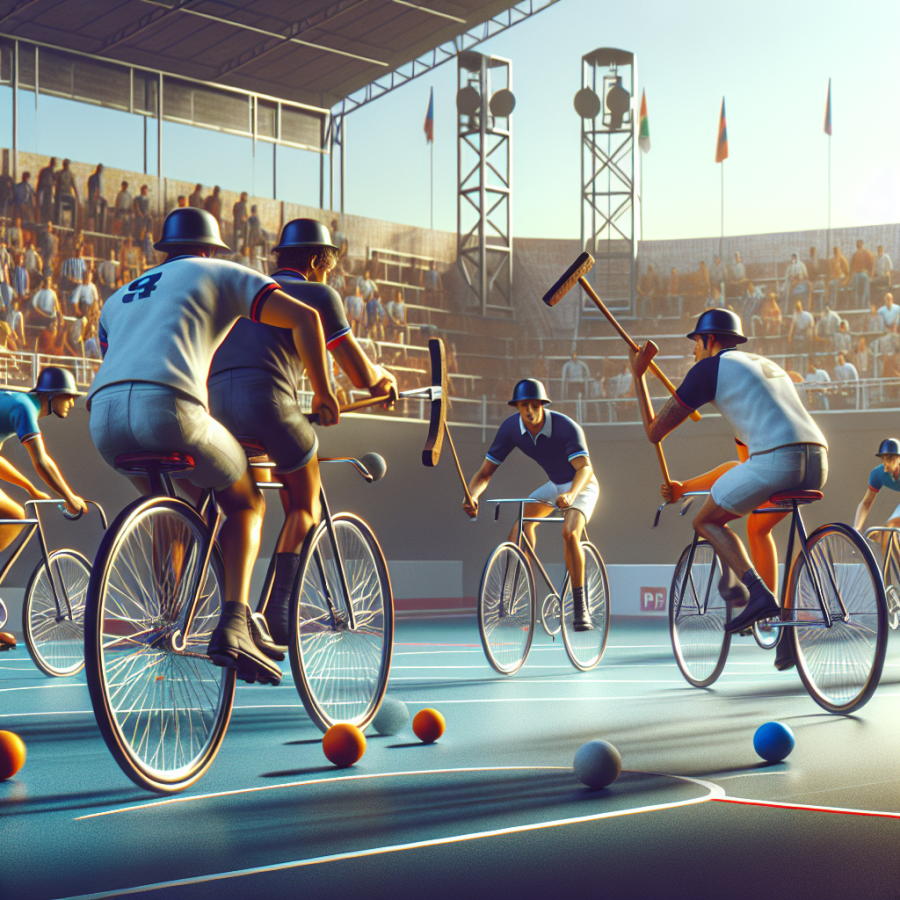Mastering the Fundamentals of Cycle Polo: Gear, Rules, and Techniques
Cycle Polo is an exhilarating sport that blends the speed of cycling with the precision of polo. Today, we will delve deeper into understanding the game's essentials, which include the gear necessary for play, the basic rules you'll need to follow, and the techniques to help you master this unique sport.
**Essential Gear**
When it comes to gear, safety is paramount in cycle polo. Players should always wear a quality helmet, preferably one that is multi-impact and designed for high-intensity sports. Gloves are also crucial to protect your hands during falls or when swinging the mallet. For the bike, a typical cycle polo setup includes a sturdy, maneuverable bicycle equipped with a single gear to simplify maintenance and minimize the risk of mechanical failure during play. The mallet consists of a shaft, usually made of lightweight materials like aluminum or carbon fiber, and a head that can be crafted from hard plastics designed to withstand substantial impact. Additionally, the ball should be hard and of a size that can be hit easily with the mallet while also being able to roll smoothly over the field of play.
**Fundamental Rules**
The rules of cycle polo can vary based on the league, but there are some standard rules that are followed internationally. The game is usually played on a hard, flat surface, such as a basketball court or a pavement area, and the boundaries are clearly marked. Teams are typically composed of three riders, and the objective is to score goals by hitting the ball into the opponent's net. Players are not allowed to touch the ground with their feet during active play; doing so results in a penalty. The game consists of chukkas (periods), which operate on a timed basis, and the team with the most goals at the end of the game is declared the winner. Contact rules vary, but in general, players must avoid any dangerous play, including hooking another player's mallet dangerously, T-boning (ramming your bike into the side of another player's bike), and any personal contact.
**Techniques to Master**
To excel in cycle polo, you'll need to develop specific skills and techniques. Ball handling is at the core, requiring players to dribble, pass, and shoot with accuracy. Effective dribbling involves keeping the ball close to the bike while navigating around opponents. Passing requires an awareness of teammates' positions and the ability to execute swift, accurate passes to set up scoring opportunities.
Read also:
Navigating the Waters: The Freedom of Freeboating Explored
The Exciting Evolution of Cycle Polo: From Grassroots to Global Passion
Cycle Polo, a sport that effortlessly combines the grace of horse polo with the agility of bicycles, has witnessed a meteoric rise in popularity over the past few decades. Fueled by its accessibility and the growing enthusiasm for cycling sports, Cycle Polo stands today at a unique intersection between a rich heritage and modern-day sporting culture.
The journey of Cycle Polo began as a grassroots movement. It is widely believed that the sport was initially conceived in Ireland in the late 19th century when enthusiasts looking for an alternative to the equestrian version turned to their bicycles. The sport was then almost like a casual pastime, with local clubs and informal games paving the way for its early growth. The informal gatherings soon grew into organized contests, with the first official set of rules being penned down in 1891.
It wasn't long before Cycle Polo caught the imagination of sports lovers beyond Irish borders. By the early 20th century, the sport had gained significant momentum in Great Britain, spreading to the British colonies, and even crossing over to the United States, where it was demonstrated at the 1908 Olympic Games. The sport’s appeal was evident from the fact that it capitalized on the existing love for cycling, while introducing the thrilling competition of polo.
However, despite the initial surge, Cycle Polo's growth was somewhat stalled by global events and the rising popularity of other sports. It remained a niche activity for many years, seen by some as a relic from a bygone era of quirky sporting endeavors. It wasn't until recent years that Cycle Polo began to re-emerge as a popular pastime and competitive sport.
What has marked its recent evolution is the sport’s adaptability. Cycle Polo has reinvented itself to fit contemporary urban environments, leading to the rise of 'Hard Court Bike Polo.' This modern variant, typically played on asphalt or concrete instead of grass, has made the sport more accessible to city dwellers and introduced a new intensity to the gameplay. Hard Court Bike Polo has its own set of tailored equipment and rules, indicating the sport's successful transition to a form that resonates with today's audience.
The internet and social media have played pivotal roles in Cycle Polo’s resurgence as a global sport. Online platforms have allowed players from around the world to connect, share strategies, and organize international tournaments. This digital networking has fostered a vibrant Cycle Polo community that defies geographical boundaries, united by a shared passion for the sport.




